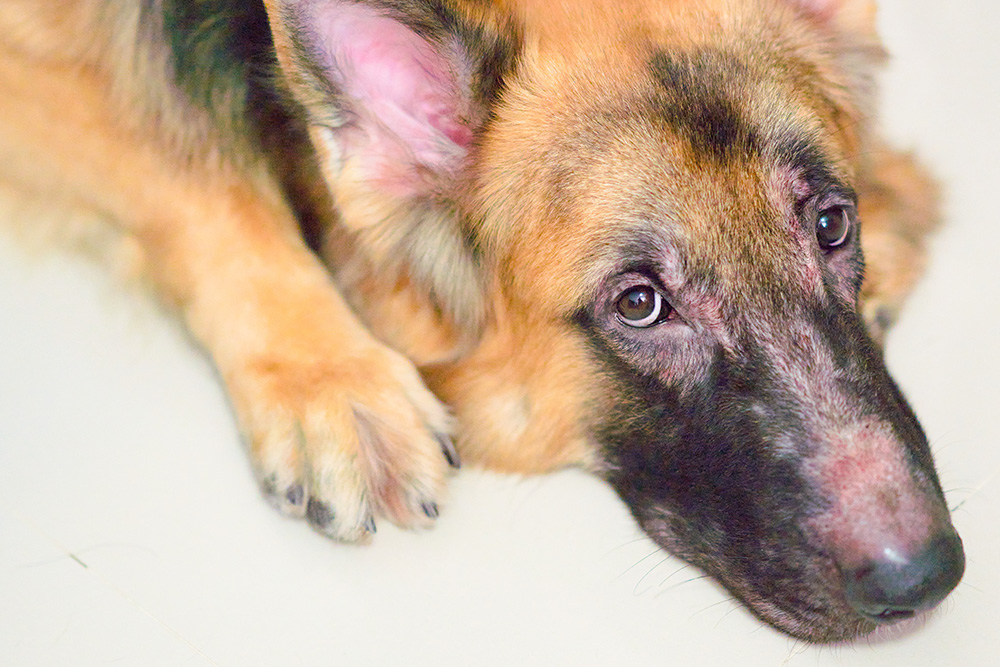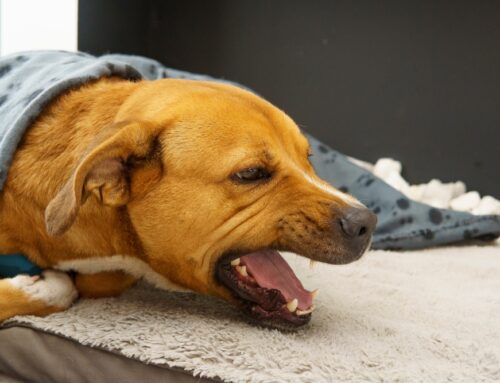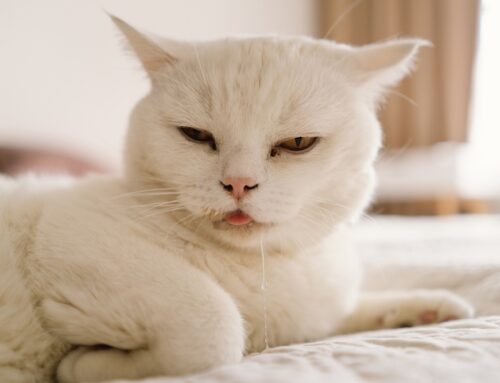Hair Loss in Dogs and Cats: When Your Pet’s Coat Tells a Story
You’ve noticed a thinning patch on your dog’s flank or caught your cat grooming the same spot obsessively until the fur disappears. At first, you might dismiss it as seasonal shedding or a minor irritation, but as the bald areas grow or multiply, concern sets in. Hair loss in pets is rarely just cosmetic. It’s often your pet’s body signaling that something deeper needs attention.
At Southern Crossing Animal Hospital in Memphis, TN, our board-certified veterinarian and Fear Free team use advanced diagnostics to uncover the root causes of alopecia and restore your pet’s comfort and confidence. From allergy testing to hormonal screening, our concierge approach ensures every pet receives personalized care tailored to their unique needs.
What Causes Alopecia in Pets?
Alopecia refers to partial or complete hair loss resulting from various underlying conditions. While normal shedding is expected, especially during seasonal changes, bald patches, persistent scratching, or skin inflammation warrant veterinary evaluation.
Hair loss can stem from external irritants like parasites and allergens or internal issues such as hormonal imbalances and stress. The pattern, location, and accompanying symptoms provide critical clues. Some pets experience itchy, inflamed skin, while others develop symmetrical, non-itchy hair loss that points to systemic disease.
Understanding that hair loss (alopecia) in dogs involves multiple potential causes helps pet owners recognize when professional diagnostics are necessary. Only thorough veterinary examination and testing can pinpoint the exact reason and guide effective treatment.
Why Is My Pet Losing Hair? Common Triggers Explained
Identifying the cause of alopecia requires detective work. Below are the most common culprits veterinarians encounter when diagnosing hair loss in dogs and cats.
Allergies: The Leading Cause of Itchy, Bald Spots
Allergies rank among the top reasons pets lose hair. Whether triggered by food ingredients, environmental allergens like pollen and dust, or flea saliva, allergic reactions cause intense itching and inflammation that lead to self-trauma.
Dogs often chew, lick, or scratch at irritated areas, creating raw patches and secondary infections. Cats typically overgroom, pulling out fur on their belly, legs, or flanks until bald spots appear. Allergy symptoms and treatment vary widely, but common signs include red skin, ear infections, and constant scratching.
Flea allergy in cats is particularly severe because even a single flea bite can trigger widespread itching and hair loss in hypersensitive cats. This is why year-round parasite prevention for pets cannot be overstated. Consistent flea control prevents allergic reactions before they start.
Parasites and Skin Infections: Hidden Culprits
Fleas, mites, and fungal infections like ringworm cause patchy hair loss, scaly skin, and discomfort. Indoor pets are not immune. Mites such as Demodex and Sarcoptes burrow into the skin, causing inflammation and hair follicle damage. Spotting and treating mites in dogs requires veterinary diagnostics, including skin scrapings and microscopic examination.
Ringworm, despite its name, is a fungal infection that creates circular bald patches with crusty edges. It’s contagious to other pets and humans, making prompt diagnosis and treatment essential. Fungal cultures and cytology help veterinarians confirm the diagnosis and prescribe appropriate antifungal therapy.
Hormonal and Endocrine Disorders: Internal Imbalances
When hair loss appears symmetrical and non-itchy, hormonal disorders are often to blame. These conditions affect the body’s internal chemistry, leading to changes in coat quality and skin health.
Hypothyroidism occurs when the thyroid gland produces insufficient hormones, causing lethargy, weight gain, and thin, brittle fur. Darkened skin and a dull coat are common. Hypothyroidism in dogs is diagnosed through blood work and managed with lifelong thyroid supplementation.
Cushing’s disease results from excess cortisol production, leading to thinning skin, pot-bellied appearance, increased thirst, and hair loss. Treating Cushing’s disease in dogs involves medication or surgery, depending on the underlying cause.
Sex hormone-related hair loss can occur in unneutered males with hormonal tumors. Testicular tumors in dogs may secrete estrogen, causing symmetrical alopecia and feminization. Neutering typically resolves the issue.
Topical hormone creams used by people- such as estrogen, progesterone, or testosterone- can cause hair loss and hormonal changes in pets if they’re accidentally exposed. Dogs and cats may absorb these medications from skin contact, bedding, or furniture, leading to thinning coats or bald patches. Always apply hormone creams to covered skin and wash your hands thoroughly afterward to keep your pet safe.
Blood work for your dog becomes essential when diagnosing these conditions. Comprehensive panels evaluate thyroid function, adrenal health, and hormone levels, providing the information needed for accurate diagnosis and treatment.
Genetic and Breed-Related Conditions: Inherited Vulnerabilities
Some breeds carry genetic predispositions to specific types of alopecia. While these conditions are not preventable, understanding breed risks helps owners monitor for early signs.
Color dilution alopecia in dogs affects breeds with dilute coat colors such as blue, fawn, or silver. Hair becomes brittle and breaks easily, leading to patchy hair loss, typically starting between six months and three years of age.
Canine flank alopecia causes cyclical, seasonal bald patches along the flanks, most commonly in Boxers, Bulldogs, and Airedales. The hair often regrows spontaneously, but treatment may speed recovery and prevent recurrence.
Stress, Anxiety, and Overgrooming: Psychological Triggers
Psychogenic alopecia occurs when stress or environmental changes lead pets, especially cats, to overgroom compulsively. Hair loss typically appears on the belly, legs, or flanks without visible skin disease. Triggers include moving, new pets, changes in routine, or lack of environmental enrichment.
Feline life stressors can profoundly impact behavior and health. Reducing stress through play, vertical spaces, hiding spots, and consistent routines helps minimize overgrooming. In severe cases, behavior modification and pheromone diffusers provide additional support.
Nutritional and Grooming Factors: Supporting Coat Health
Poor nutrition, harsh grooming products, and infrequent brushing can damage the coat and contribute to hair loss. Balanced diets rich in essential fatty acids, vitamins, and minerals support healthy skin and fur. Gentle grooming routines remove loose hair, distribute natural oils, and allow early detection of skin issues.
Understanding why pets need regular grooming goes beyond aesthetics. Consistent grooming prevents matting, reduces shedding, and promotes bonding while keeping the coat and skin in optimal condition.
How Do Veterinarians Diagnose Hair Loss?

Identifying the root cause of alopecia requires thorough veterinary examination and diagnostic testing. Guesswork leads to ineffective treatments and prolonged discomfort.
At Southern Crossing Animal Hospital, our diagnostic approach includes:
- Physical examination of the skin, coat, and overall health
- Skin scraping or cytology to detect mites, bacteria, or yeast
- Fungal cultures to diagnose ringworm
- Blood work to evaluate thyroid, adrenal, and hormone function
- Allergy testing or dietary trials to identify food or environmental triggers
Our diagnostic ultrasound and echocardiogram capabilities allow us to assess internal organ function when hormonal disorders are suspected. This level of precision ensures accurate diagnosis and targeted treatment plans.
What Treatments Are Available for Hair Loss?
Treatment depends entirely on the underlying cause. Once the diagnosis is confirmed, veterinarians create customized plans to address the root issue and restore coat health.
For allergies: antihistamines, immunotherapy, diet changes, and medicated shampoos reduce inflammation and itching.
For parasites: prescription preventives, topical treatments, and environmental cleaning eliminate infestations and prevent recurrence.
For hormonal issues: medication or surgery manages thyroid, adrenal, or reproductive gland disorders. Lifelong monitoring ensures stable hormone levels.
For infections: antifungal or antibiotic therapy clears bacterial and fungal infections, often combined with topical treatments.
For stress: behavior modification, environmental enrichment, and pheromone diffusers reduce anxiety-driven overgrooming.
Consistent follow-up visits allow veterinarians to monitor progress, adjust treatments, and ensure hair regrowth and comfort. Our Fear Free certification ensures that every visit minimizes stress, making treatment easier for pets and owners alike.
How Can I Prevent Hair Loss in My Pet?
Prevention and early intervention are key to maintaining healthy skin and coats. Simple, consistent practices make a significant difference.
- Keep pets on year-round parasite prevention to avoid flea allergies and mite infestations
- Provide balanced, nutrient-rich diets that support skin and coat health
- Maintain routine grooming and conduct regular skin checks at home
- Schedule annual wellness exams to catch issues early
Our AAHA-accredited practice follows the highest standards of veterinary care, ensuring that every pet receives comprehensive preventive services tailored to their individual needs.
Restoring Your Pet’s Healthy Coat
Most cases of hair loss can be treated successfully once the underlying cause is identified. With professional diagnostics, targeted treatments, and consistent care, pets can regain healthy, shiny coats and enjoy lasting comfort.
At Southern Crossing Animal Hospital, our concierge approach combines advanced technology with compassionate expertise. Whether your pet needs dental care, cancer screening, or urgent care for sudden skin issues, our team is here to help.
If you’ve noticed bald spots, itching, or changes in your pet’s fur texture, don’t wait. Call us at (901) 452-3171 or schedule an appointment today to uncover the cause and restore your pet’s comfort and confidence.








Leave A Comment